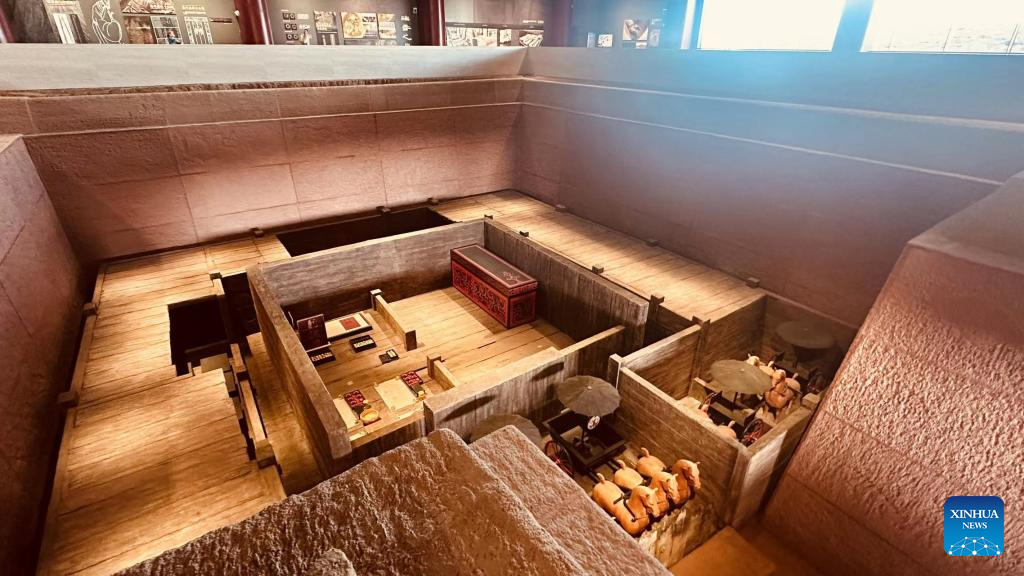
This photo taken on Dec. 15, 2023 shows a replica of the main tomb of Liu He, the Marquis of Haihun, at the protection and display facility of the tomb in Nanchang, east China's Jiangxi Province. (Xinhua/Yuan Huijing)
NANCHANG, Dec. 15 (Xinhua) -- The main tomb of the Marquis of Haihun, the excavation of which was one of the most significant archaeological activities in the country in recent years, opened to the public on Friday in east China's Jiangxi Province.
The Western Han Dynasty (202 B.C.-25 A.D.) tomb, located in the provincial capital Nanchang, is one of the few imperial tombs not to be looted.
The main tomb is around 8 meters deep, 17 meters long and 16 meters wide, and linked by a long path. To protect the site, visitors will observe it from above via a newly-built passageway.
According to the burial practice of the time, which required the dead to be treated as if they were alive, the interior chamber of the tomb was divided into a bedroom on the east side and a living room on the west side, resembling the living environment of the marquis Liu He when he was alive, said Fan Lijun, deputy curator of the Nanchang Relic Museum of Haihunhou State of Han Dynasty.
Visitors can have a look at the layout of the tomb and also see replicas of some unearthed items, including Liu's coffin and a dressing mirror painted with the portrait of Confucius.
In addition, naked-eye 3D technology is applied to vividly demonstrate different sections of the tomb as well as its collection of relics.
Excavation of the tomb began in 2011 and more than 10,000 pieces of relics have been unearthed in this process.
Among the unearthed are nearly 480 goldware items and processed rehmannia root confirmed as the earliest sample of processed herbal medicine found in China.
The remains of Liu were found in a coffin in the interior chamber of the main tomb and removed in January 2016 for further research.
The marquis Liu was the grandson of Emperor Wu, whose reign ushered in one of the most prosperous periods in China's history.
Liu was given the title "Haihunhou," after he was deposed as emperor following only 27 days in this role. He was dethroned by the royal clan, because of what they considered a lack of talent and morals. Haihun is the ancient name of a very small kingdom in north Jiangxi. ■
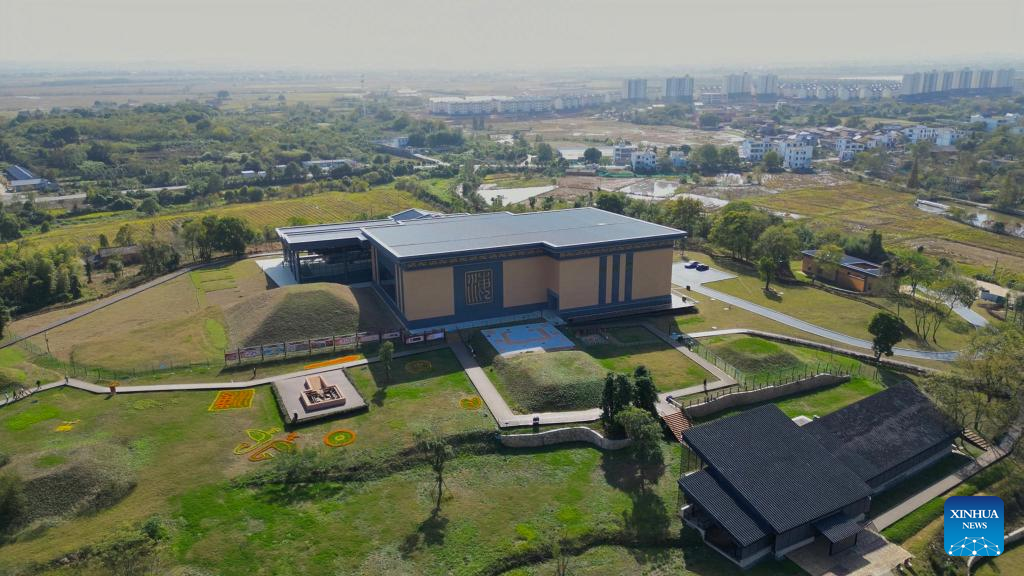
This aerial photo taken on Dec. 15, 2023 shows the protection and display facility of the main tomb of Liu He, the Marquis of Haihun, in Nanchang, east China's Jiangxi Province. (Xinhua/Yuan Huijing)
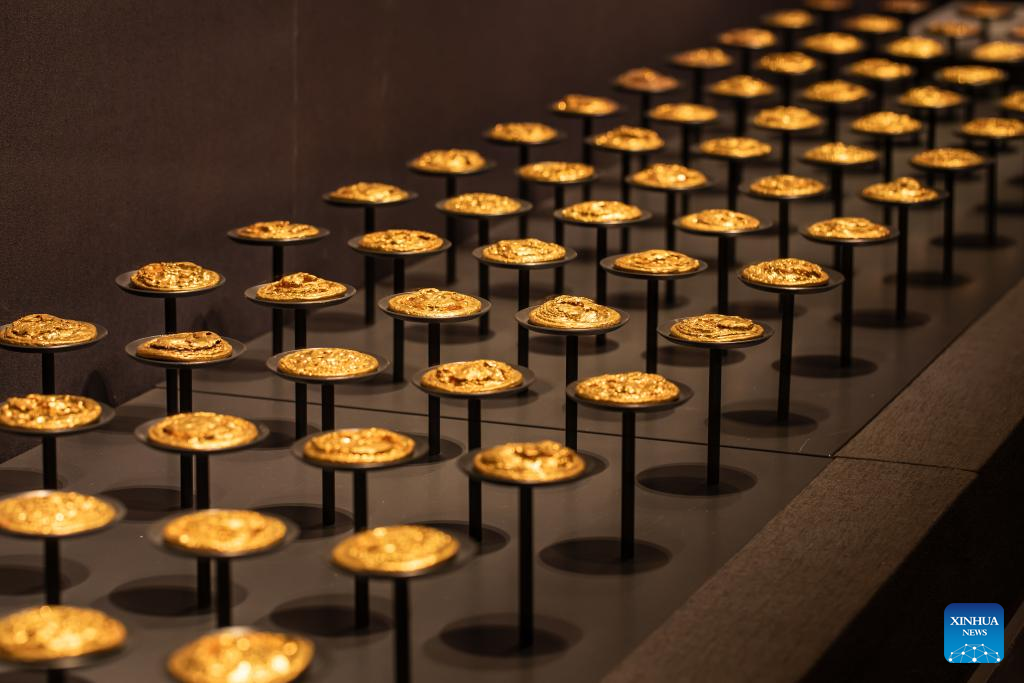
This undated file photo shows goldware items found in the coffin of Liu He, the Marquis of Haihun, displaying at the Nanchang Relic Museum of Haihunhou State of Han Dynasty in Nanchang, east China's Jiangxi Province. (Nanchang Relic Museum of Haihunhou State of Han Dynasty/Handout via Xinhua)
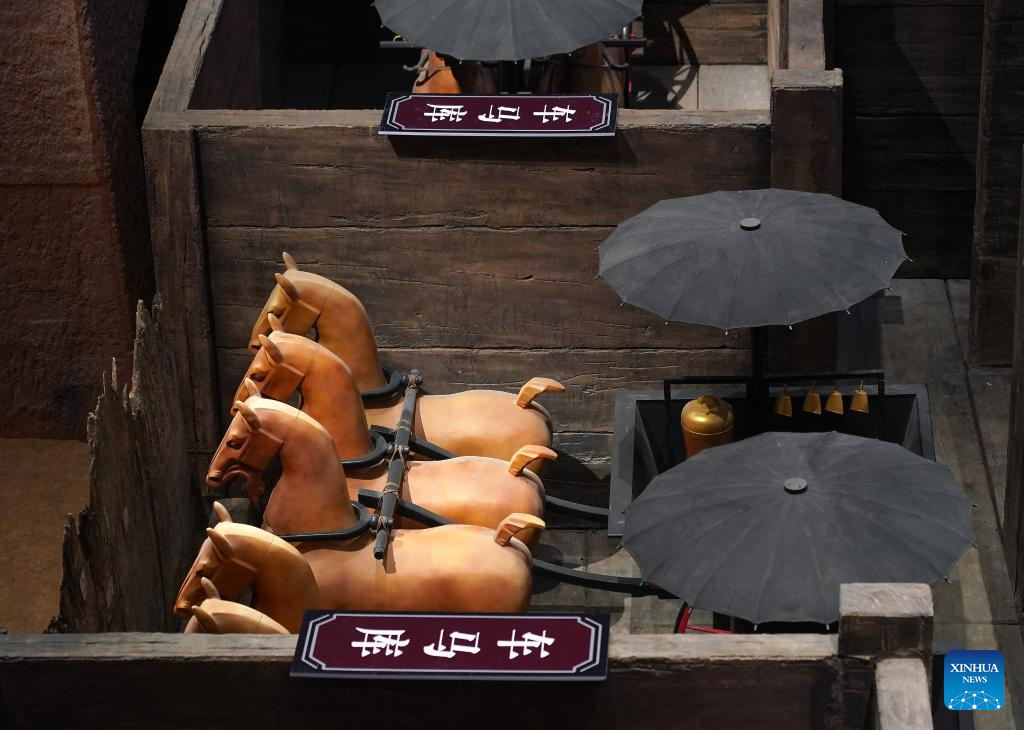
This photo taken on Dec. 15, 2023 shows part of a replica of the main tomb of Liu He, the Marquis of Haihun, at the relics of the tomb in Nanchang, east China's Jiangxi Province. The main tomb of the Marquis of Haihun, the excavation of which was one of the most significant archaeological events in the country in recent years, opened to the public on Friday in east China's Jiangxi Province. (Xinhua/Wan Xiang)

This photo taken on Dec. 15, 2023 shows part of a replica of the main tomb of Liu He, the Marquis of Haihun, at the relics of the tomb in Nanchang, east China's Jiangxi Province. The main tomb of the Marquis of Haihun, the excavation of which was one of the most significant archaeological events in the country in recent years, opened to the public on Friday in east China's Jiangxi Province. (Xinhua/Wan Xiang)
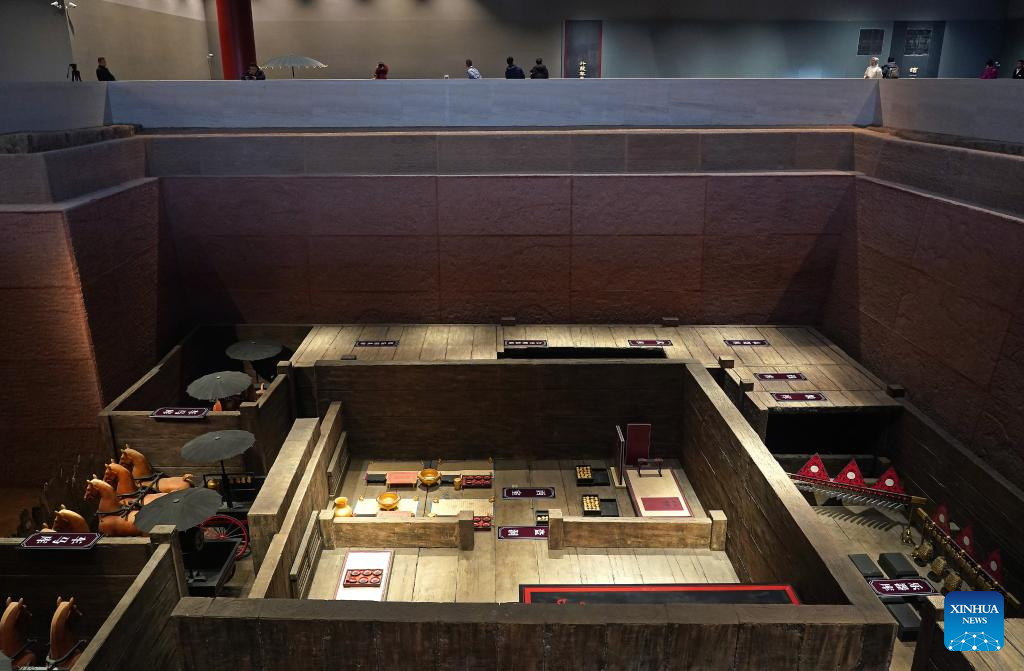
People visit the site of the main tomb of Liu He, the Marquis of Haihun, in Nanchang, east China's Jiangxi Province, Dec. 15, 2023. The main tomb of the Marquis of Haihun, the excavation of which was one of the most significant archaeological events in the country in recent years, opened to the public on Friday in east China's Jiangxi Province.(Xinhua/Wan Xiang)
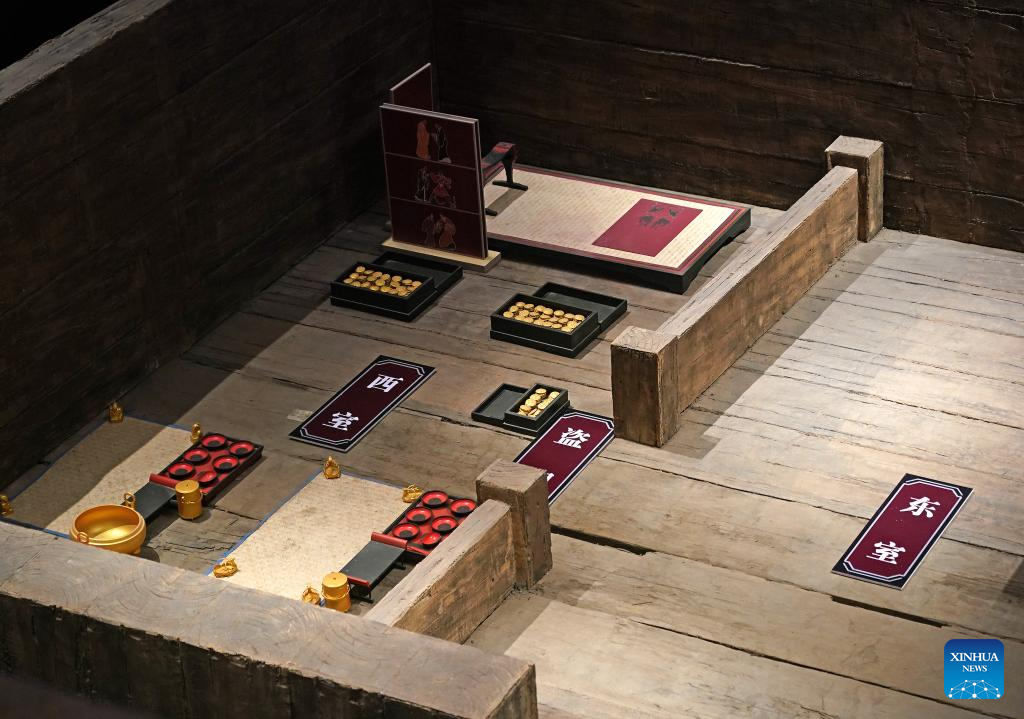
This photo taken on Dec. 15, 2023 shows part of a replica of the main tomb of Liu He, the Marquis of Haihun, at the relics of the tomb in Nanchang, east China's Jiangxi Province. The main tomb of the Marquis of Haihun, the excavation of which was one of the most significant archaeological events in the country in recent years, opened to the public on Friday in east China's Jiangxi Province.(Xinhua/Wan Xiang)

People visit the site of the main tomb of Liu He, the Marquis of Haihun, in Nanchang, east China's Jiangxi Province, Dec. 15, 2023. The main tomb of the Marquis of Haihun, the excavation of which was one of the most significant archaeological events in the country in recent years, opened to the public on Friday in east China's Jiangxi Province.(Xinhua/Wan Xiang)
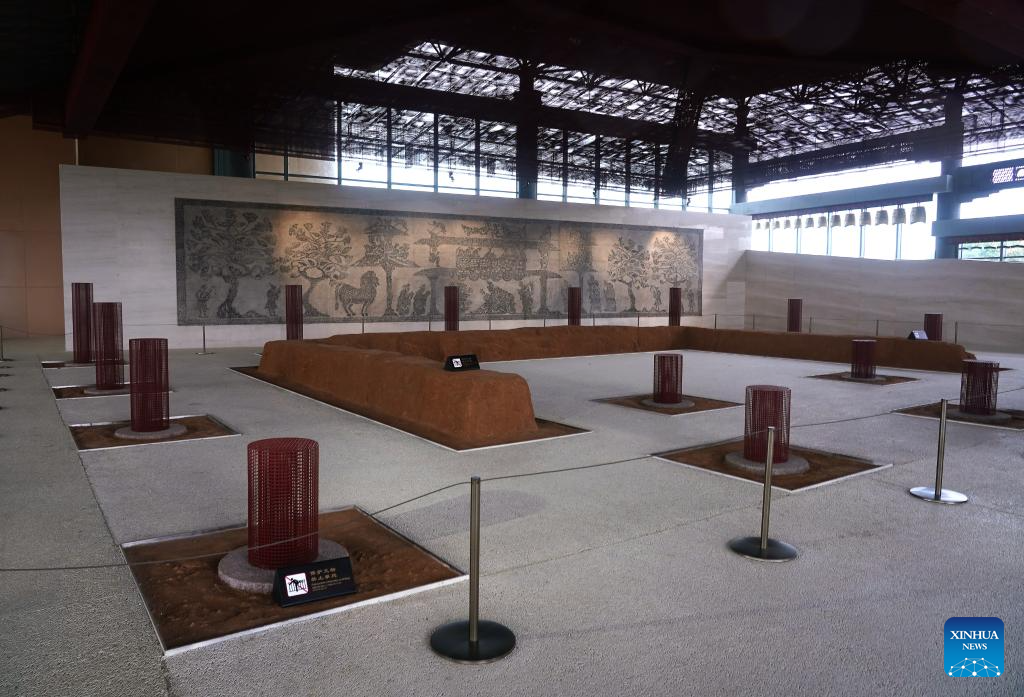
This photo taken on Dec. 15, 2023 shows the site of the main tomb of Liu He, the Marquis of Haihun, in Nanchang, east China's Jiangxi Province. The main tomb of the Marquis of Haihun, the excavation of which was one of the most significant archaeological events in the country in recent years, opened to the public on Friday in east China's Jiangxi Province.(Xinhua/Wan Xiang)
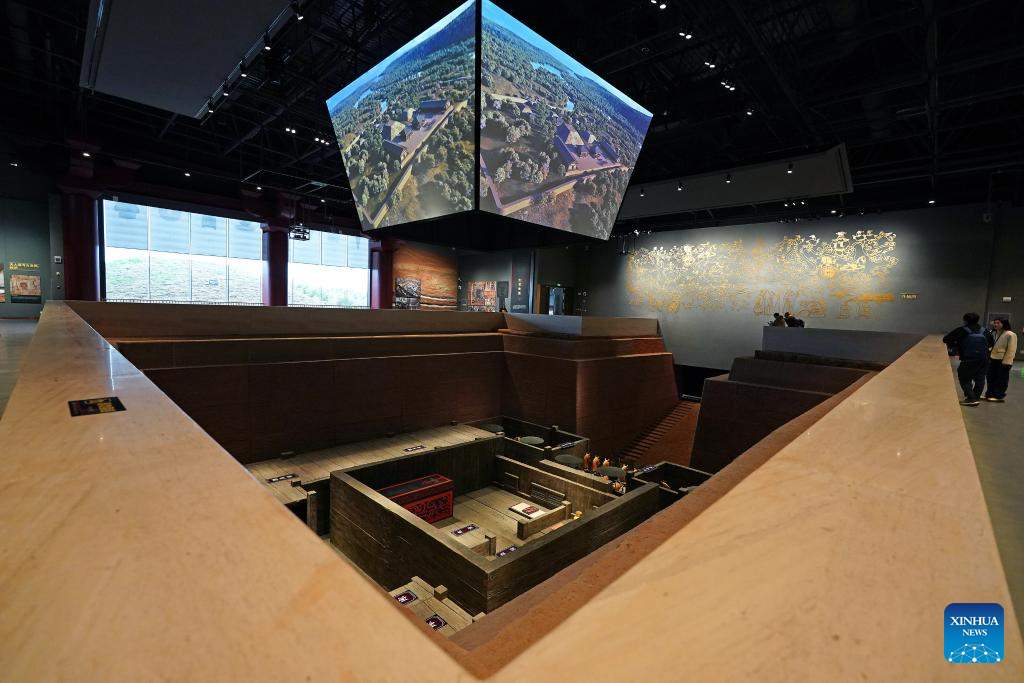
People visit the site of the main tomb of Liu He, the Marquis of Haihun, in Nanchang, east China's Jiangxi Province, Dec. 15, 2023. The main tomb of the Marquis of Haihun, the excavation of which was one of the most significant archaeological events in the country in recent years, opened to the public on Friday in east China's Jiangxi Province. (Xinhua/Wan Xiang)

This photo taken on Dec. 15, 2023 shows part of a replica of the main tomb of Liu He, the Marquis of Haihun, at the relics of the tomb in Nanchang, east China's Jiangxi Province. The main tomb of the Marquis of Haihun, the excavation of which was one of the most significant archaeological events in the country in recent years, opened to the public on Friday in east China's Jiangxi Province. (Xinhua/Wan Xiang)

This photo taken on Dec. 15, 2023 shows the site of the main tomb of Liu He, the Marquis of Haihun, in Nanchang, east China's Jiangxi Province. The main tomb of the Marquis of Haihun, the excavation of which was one of the most significant archaeological events in the country in recent years, opened to the public on Friday in east China's Jiangxi Province. (Xinhua/Wan Xiang)



